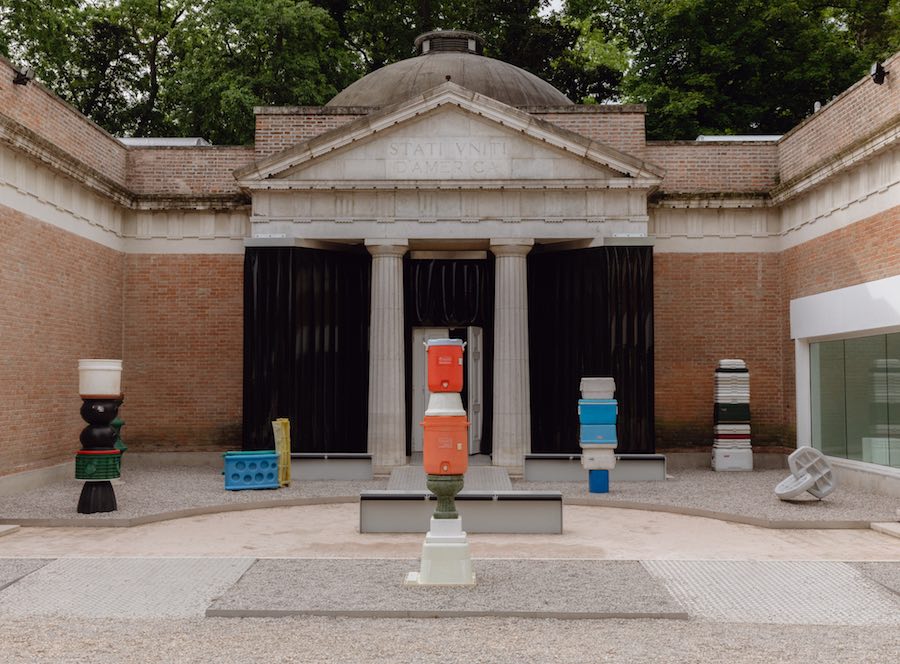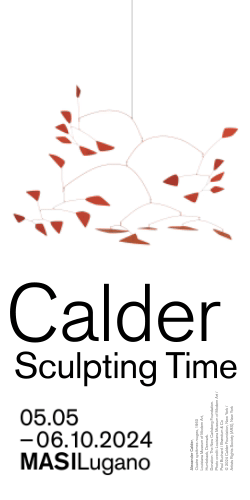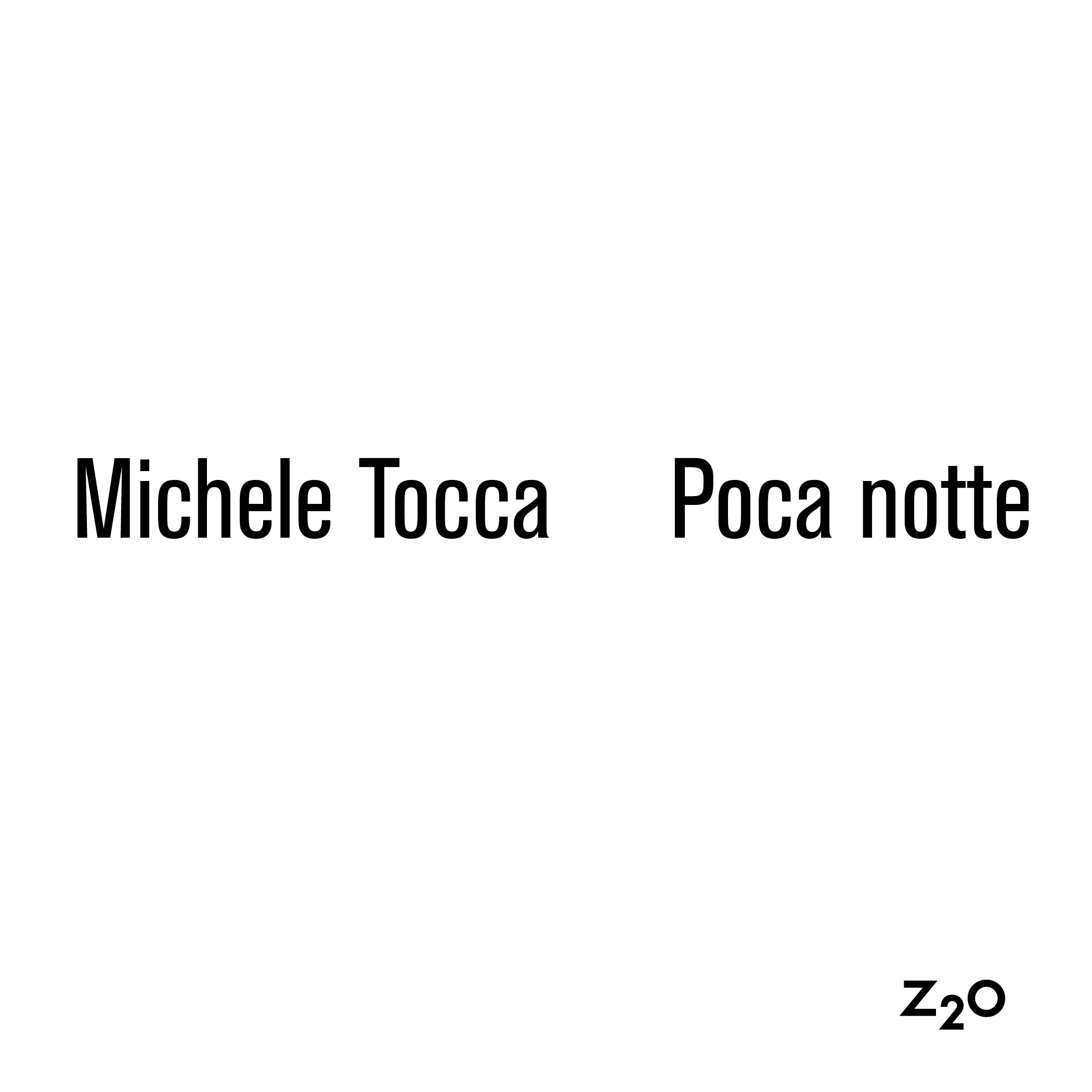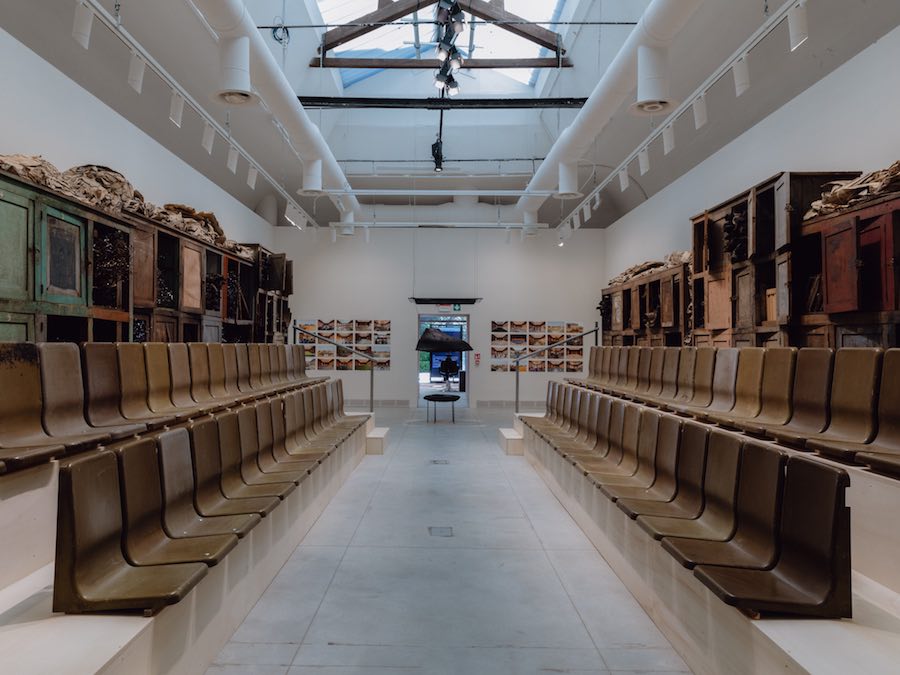

English version below –
“A chi tra noi vorrebbe avere un ruolo attivo nella creazione di pratiche culturali controegemoniche, “una politica di posizione” intesa come punto di osservazione e prospettiva radicale impone di individuare spazi da cui iniziare un processo di revisione.” afferma Bell Hooks nel 1991, nel suo saggio Elogio del margine (traduzione italiana Maria Nadotti, Tamu Ed. 2020).
La ricerca di questi spazi, in cui poter essere “agenti di cambiamento”, come scrive la curatrice della Biennale Architettura 2023 Lesley Lokko, può intersecare gli obiettivi di un’esposizione di architettura, che lei stessa definisce “un momento e un processo”. Il cuore della XVIII edizione della Biennale Architettura di Venezia, intitolata Laboratory Of The Future, che ha aperto i battenti il 20 maggio, ruota attorno all’idea che questa manifestazione, nel 2023, possa essere un luogo florido di scambi, tra partecipanti e visitatori, tra discipline differenti, escludendo un’impostazione di tipo didattico e ampliando gli orizzonti geografici, creativi, etici.
Non solo, più nello specifico, il titolo della mostra parla di un laboratorio del futuro, come luogo di sperimentazione, di avanzamento culturale, che necessariamente prende le mosse da uno spostamento dell’asse occidente-centrico.
Soffermandosi sul continente africano, Lesley Lokko mette sotto gli occhi di tutti l’Africa come metafora di uno stato di fatto che solo apparentemente rappresenta una questione marginale. Ragionare sulle possibilità di un continente che attualmente ha il più rapido tasso di urbanizzazione (4% annuo), significherebbe iniziare a dare nuove risposte a interrogativi su temi come il cambiamento climatico, la diaspora, questioni di equità sociale e culturale, affrontandoli attraverso le complessità del continente più giovane (ma anche più antico) del mondo, aprendo per questo ulteriori possibilità di confronto.
La proposta della curatrice pone in alto il livello di complessità di questa Biennale con pochi modelli e progetti di “vera architettura” (la cui carenza ha fatto storcere il naso a molti), mettendo di fronte agli occhi di visitatori e professionisti l’intricata rete di relazioni e culture in cui l’architettura vive (insieme a noi), ma che diversamente dal passato, adesso non può più fare a meno di considerare.

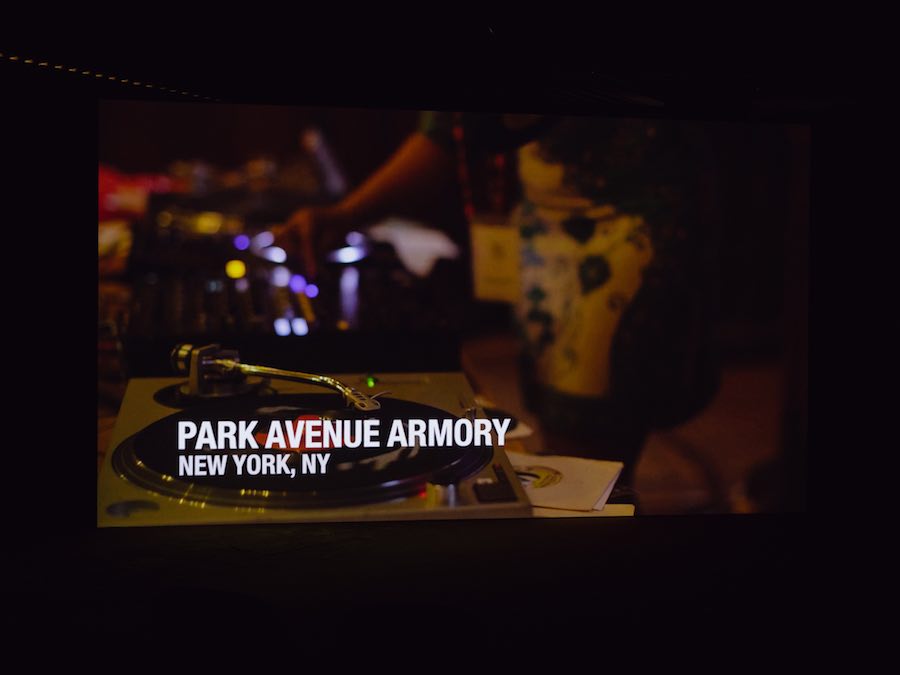
La grandezza del progetto di Lokko sta nel parlare di architettura senza parlare soltanto di architettura.
L’arazzo sonoro e visivo di Rhael LionHeart Cape che si staglia di fronte ai visitatori all’ingresso dell’Arsenale, anticipato dalle parole della curatrice, attraverso la poesia indaga lo spazio della diaspora, in cui le azioni del ricordare, del dimenticare e del riprogettare si trasformano in dispositivi architettonici, che costruiscono strutture di significato del movimento diasporico.
Questa emozionante ouverture introduce le cinque sezioni della mostra pensate dalla curatrice, che accolgono risposte a due dei temi più urgenti del nostro presente: la decolonizzazione e la decarbonizzazione. Quella più ampia, Dangerous Liasons, si concentra sulle relazioni, definite pericolose, tra l’architettura e l’infinità di campi con cui questa disciplina si interfaccia. Ad esempio, il progetto di Andrés Jaque/Office for Political Innovation mette in luce il legame tra architettura e segregazione con il discutibile piano di costruzione di Hudson Yards a New York, dove i materiali utilizzati per la realizzazione della facciata e dell’assestamento di quella zona sull’Hudson River, provengono da miniere situate in Zimbabwe e Namibia.
La partecipazione di Sammy Baloji insieme a Twenty Nine Studio, premiata con la menzione speciale, affronta la materializzazione del paesaggio e la delocalizzazione dei sistemi sociali precoloniali attraverso l’azione coloniale.
Nella stessa sezione, il lavoro vincitore del Leone d’Oro per la migliore partecipazione, il progetto DAAR di Alessandro Petti e Sandi Hilal sull’Ente di Decolonizzazione Borgo Rizza, nella tappa veneziana indaga una forma di colonialismo fascista in Sicilia esaminando le possibilità di riappropriazione e riutilizzo di quelle architetture.
Ogni intervento porta avanti istanze utili al rinnovamento dell’architettura, chiamando gli architetti – che Lokko denomina practitioners ampliandone le responsabilità e le capacità – a interrogarsi, a mettersi in discussione, a partecipare.
E così nel padiglione centrale, che ospita la sezione Force Majeure, i contributi di Hood Design Studio, Ibrahim Mahama, Olalekan Jeyifous, Thandi Loewenson e l’emozionante film di Theaster Gates (in mostra con un’opera anche nella nuova mostra di Fondazione Prada) tra gli altri, conducono il discorso intrecciando i loro percorsi, le loro azioni, seguendo un senso di “forza maggiore” come a indicare qualcosa di imprevedibile, inevitabile, mettendo alla prova il nostro giudizio rispetto a che cosa sia effettivamente imprevedibile e irrimediabile.
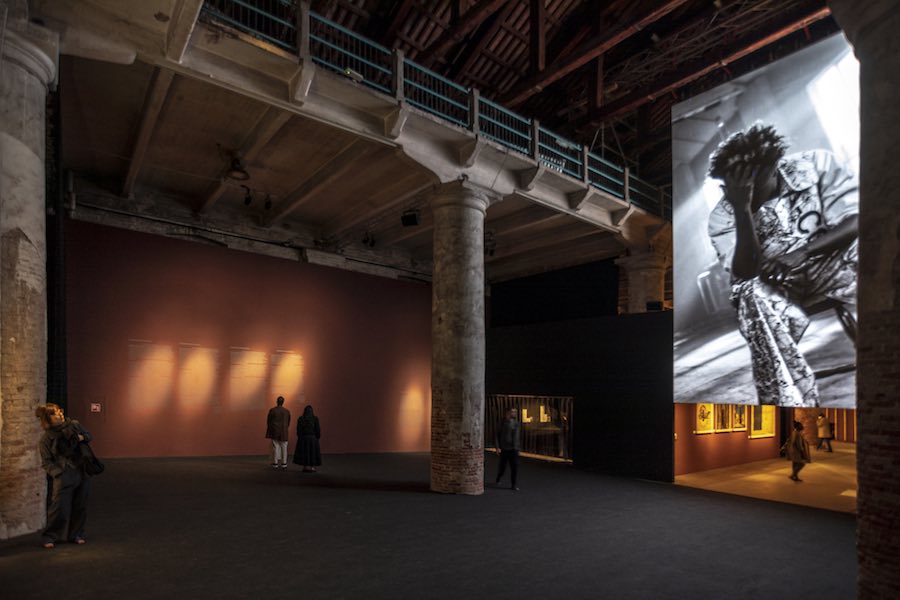

Tra le Partecipazioni Nazionali, convincono alcuni padiglioni più di altri, che sono riusciti a restituire la complessità dell’invito di Lokko con proposte che emergono dal riconoscimento della propria frammentarietà culturale come valore che moltiplica le prospettive di azione (come nel padiglione britannico), della ricchezza di tradizioni indigene oppure di culture vicine e accolte, da riflessioni sul concetto di comunità e cooperazione internazionale (come la Serbia), a ricerche su nuovi materiali o sul riuso dell’esistente (come Stati Uniti e Belgio). La consistenza e la chiarezza dei messaggi veicolati sono le chiavi di volta dei progetti di diverse nazioni che hanno saputo centrare il punto restando coerenti alla loro storia ma anche al tema della manifestazione.
Tra questi, non soltanto ma certamente, l’Austria e la Svizzera che hanno lavorato in maniera diversa sul tema del confine, la Germania che recupera i materiali di scarto di diversi padiglioni della Biennale d’Arte 2022 proponendo un lavoro sulla cura sociale, sulla manutenzione e sul riuso. Così anche il Giappone, che parla di amore per un’architettura che è atto d’amore essa stessa verso le città, che continuano a crescere in maniera sempre più impersonale. E anche il vivace campo da basket del padiglione Messico in scala 1:1, che racconta come luoghi legati alla cultura occidentale possano essere decostruiti, diventando nuove unità di costruzione su cui le utopie indigene organizzano culture di resistenza.
Il padiglione vincitore del Leone d’Oro infine, quello del Brasile con il progetto Terra curato da Gabriela de Matos e Paulo Tavares, descrive la propria proposta curatoriale partendo dal pensare al Brasile come terra nel senso più ampio possibile, e alla terra come custode di memorie passate e future, come pianeta, come luogo da abitare, come campo su cui l’architettura ha il compito di lavorare in rapporto a questioni urbane, territoriali e ambientali.
Insomma, questa edizione della Biennale d’Architettura non pone l’attenzione su temi inediti o non ancora esplorati, ma con grande forza chiama in causa l’architettura e gli architetti, spogliandoli dell’aura di maestri a cui guardare con timore reverenziale. Mettendo in discussione le responsabilità, le competenze, le capacità di comprensione delle relazioni, delle cause e degli effetti che ogni azione può avere nel mondo che abitiamo oggi, Lesley Lokko lancia un invito a espandere sempre di più il proprio orizzonte, a guardare all’architettura come premessa di una pratica poetica, civile e sociale.


Biennale Architettura 2023, The Laboratory of the Future
“To those of us who would like to play an active role in the creation of counterhegemonic cultural practices, <<a politics of position>> understood as a point of observation and radical perspective requires us to identify spaces from which to begin a process of revision.” says Bell Hooks in 1991, in her essay In Praise of the Margin.
The search for these spaces, where to be “agents of change,” as curator Lesley Lokko writes, can intersect with the aims of an architecture exhibition, which she calls “a moment and a process.” The heart of the 18th edition of the Venice Architecture Biennale, titled Laboratory Of The Future, which opened its doors on May 20, revolves around the idea that this event, in 2023, can be a thriving place of exchange, between participants and visitors, between different disciplines, excluding a didactic approach and expanding geographic, creative, and ethical horizons.
Not only that, more specifically, the title of the exhibition speaks of a laboratory of the future, as a place of experimentation, of cultural advancement, which necessarily takes its starting point from a shift in the West-centric axis.
Dwelling on the African continent, Lesley Lokko puts Africa in the spotlight as a metaphor for a state of affairs that only seemingly represents a marginal issue. Reasoning about the possibilities of a continent that currently has the fastest rate of urbanization (4 percent per year), would mean beginning to give new answers to questions about issues such as climate change, diaspora, and questions of social and cultural equity, addressing them through the complexities of the world’s youngest (and at the same time oldest) continent, opening up for further possibilities of confrontation.
The curator’s proposal sets the level of complexity of this biennial high with few models and projects of “real architecture” (the lack of which has made many turn their noses up at it), putting before the eyes of visitors and professionals the intricate web of relationships and cultures in which architecture lives (along with us), which, unlike in the past, it now can no longer help but consider.
The greatness of Lokko’s project lies in talking about architecture without talking only about architecture.
Rhael LionHeart Cape’s sound and visual tapestry that stands before visitors at the entrance to the Arsenal, anticipated by the curator’s words, through poetry investigates the space of diaspora, in which the actions of remembering, forgetting and redesigning are transformed into architectural devices, which build structures of meaning of the diasporic movement.
This exciting overture introduces the five sections of the exhibition designed by the curator, which welcome responses to two of the most pressing issues of our present: decolonization and decarbonization. The larger one, Dangerous Liasons, focuses on the relationships, defined as dangerous, between architecture and the infinity of fields with which this discipline interfaces.
For example, Andrés Jaque/Office for Political Innovation’s project highlights the link between architecture and segregation with the questionable Hudson Yards construction plan in New York City, where the materials used for the façade and settlement of that area overlooking the Hudson River came from mines located in Zimbabwe and Namibia. Sammy Baloji’s participation together with Twenty Nine Studio, awarded special mention, addresses the materialization of landscape and the relocation of precolonial social systems through colonial action.
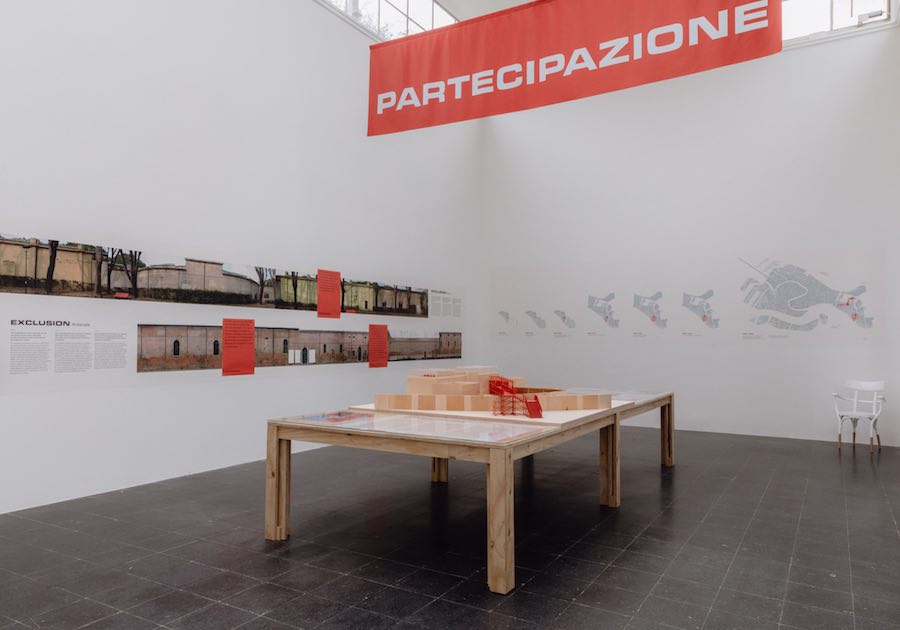
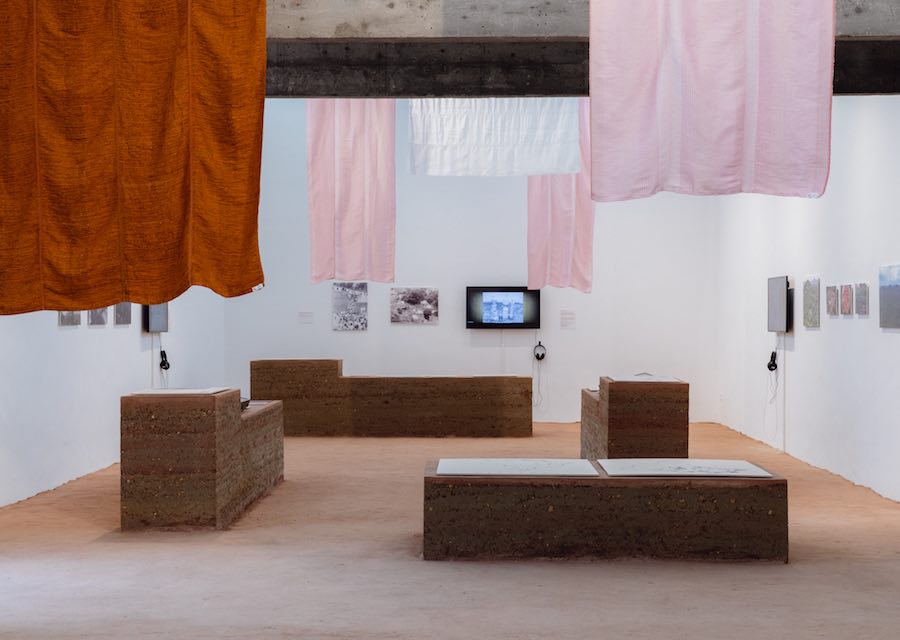
In the same section, the work that won the Golden Lion for Best Participation, Alessandro Petti and Sandi Hilal’s DAAR project on the Borgo Rizza Decolonization Entity, in the Venetian stage, investigates a form of fascist colonialism in Sicily by examining the possibilities of reappropriation and reuse of those architectures.
Each intervention brings forward instances that are useful for the renewal of architecture, calling architects – whom Lokko calls practitioners by expanding their responsibilities and capabilities – to question themselves, to participate.
And so in the central pavilion, which houses the Force Majeure section, the contributions of Hood Design Studio, Ibrahim Mahama, Olalekan Jeyifous, Thandi Loewenson and the exciting film by Theaster Gates (also showing a work in the new Fondazione Prada exhibition) among others, lead the discourse by interweaving their paths, their actions, following a sense of “force majeure” as if to indicate something unpredictable, inevitable, testing our judgment regarding what is actually unpredictable and irretrievable.
Among the National Participations, some pavilions are more convincing than others, which have managed to fulfil the complexity of Lokko’s invitation with proposals that emerge from the recognition of one’s own cultural fragmentariness as a value that multiplies perspectives for action (as in the British pavilion), of the richness of indigenous traditions or of neighboring and accepted cultures, from reflections on the concept of community and international cooperation (such as Serbia), to research on new materials or the reuse of the existing (such as the United States and Belgium). The consistency and clarity of the messages conveyed are the keys to the projects of several nations that hit the mark by remaining consistent with their history but also with the theme of the event.
These include, not only but certainly, Austria and Switzerland, which have worked in different ways on the theme of the border, Germany, which recovers waste materials from several pavilions of the Art Biennale 2022 proposing work on social care, maintenance and reuse. Likewise Japan, which speaks of love for an architecture that is itself an act of love toward cities, which continue to grow increasingly impersonal. Also the Mexico pavilion’s lively 1:1 scale basketball court, which tells how places associated with Western culture can be deconstructed, becoming new building units on which indigenous utopias organize cultures of resistance.
Finally, the pavilion that won the Golden Lion, that of Brazil with the project Terra curated by Gabriela de Matos and Paulo Tavares, describes its curatorial proposal by starting from thinking of Brazil as land in the broadest possible sense, and of soil as a custodian of past and future memories, as a planet, as a place to inhabit, as a field on which architecture is tasked to work in relation to urban, territorial and environmental issues.
In short, this edition of the Architecture Biennale does not focus attention on unprecedented or unexplored themes, but with great force calls architecture and architects into question, stripping them of the aura of masters to be looked up to with reverential awe. By questioning the responsibilities, skills, and capacities for understanding the relationships, causes, and effects that every action can have in the world we inhabit today, Lesley Lokko issues an invitation to expand one’s horizon ever further, to look at architecture as the premise of poetic, civic, and social practice.

